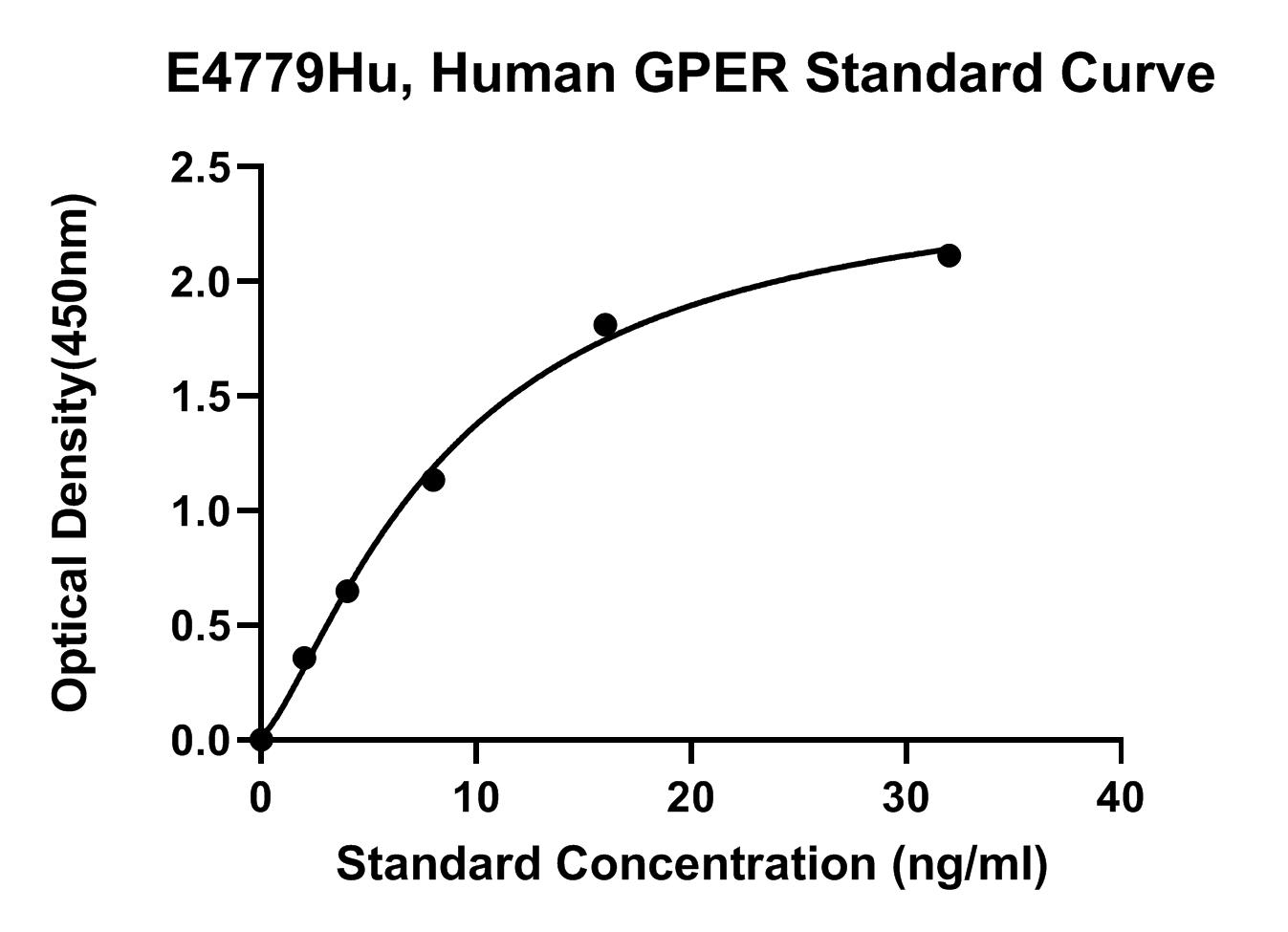E4779Hu
Human G Protein Coupled Estrogen Receptor 1, GPER ELISA Kit
Bioassay Technology Laboratory
DESCRIPTION
G-protein coupled estrogen receptor that binds to 17-beta-estradiol (E2) with high affinity, leading to rapid and transient activation of numerous intracellular signaling pathways. Stimulates cAMP production, calcium mobilization and tyrosine kinase Src inducing the release of heparin-bound epidermal growth factor (HB-EGF) and subsequent transactivation of the epidermal growth factor receptor (EGFR), activating downstream signaling pathways such as PI3K/Akt and ERK/MAPK. Mediates pleiotropic functions among others in the cardiovascular, endocrine, reproductive, immune and central nervous systems. Has a role in cardioprotection by reducing cardiac hypertrophy and perivascular fibrosis in a RAMP3-dependent manner. Regulates arterial blood pressure by stimulating vasodilation and reducing vascular smooth muscle and microvascular endothelial cell proliferation. Plays a role in blood glucose homeostasis contributing to the insulin secretion response by pancreatic beta cells. Triggers mitochondrial apoptosis during pachytene spermatocyte differentiation. Stimulates uterine epithelial cell proliferation. Enhances uterine contractility in response to oxytocin. Contributes to thymic atrophy by inducing apoptosis. Attenuates TNF-mediated endothelial expression of leukocyte adhesion molecules. Promotes neuritogenesis in developing hippocampal neurons. Plays a role in acute neuroprotection against NMDA-induced excitotoxic neuronal death. Increases firing activity and intracellular calcium oscillations in luteinizing hormone-releasing hormone (LHRH) neurons. Inhibits early osteoblast proliferation at growth plate during skeletal development. Inhibits mature adipocyte differentiation and lipid accumulation. Involved in the recruitment of beta-arrestin 2 ARRB2 at the plasma membrane in epithelial cells. Functions also as a receptor for aldosterone mediating rapid regulation of vascular contractibility through the PI3K/ERK signaling pathway. Involved in cancer progression regulation. Stimulates cancer-associated fibroblast (CAF) proliferation by a rapid genomic response through the EGFR/ERK transduction pathway. Associated with EGFR, may act as a transcription factor activating growth regulatory genes (c-fos, cyclin D1). Promotes integrin alpha-5/beta-1 and fibronectin (FN) matrix assembly in breast cancer cells.
DETAILS
- GeneID: 2852
- Species: Human
- Storage: 2-8ºC
- MASS(Da): 42,248
- Synonyms: Chemoattractant receptor-like 2;FEG-1;Flow-induced endothelial G-protein coupled receptor 1;G protein-coupled estrogen receptor 1;GPCR-Br;GPER 1;GPER1;G-protein coupled estrogen receptor 1;G-protein coupled receptor 30;IL8-related receptor DRY12;LYGPR;Lymphocyte-derived G-protein coupled receptor;Membrane estrogen receptor;mER
- Assay Time: 1h 30m
- Assay Type: Sandwich
- Gene Names: GPER1
- Reactivity: Human
- Sample Type: Serum, plasma, cell culture supernates
- Sensitivity: 0.099ng/ml
- Target Protein: GPER1
- Detection Range: 0.2-60ng/ml
- Full Product Name: G Protein Coupled Estrogen Receptor 1
- Standard Solution: 64ng/ml
- UniProt Accession: Q99527
